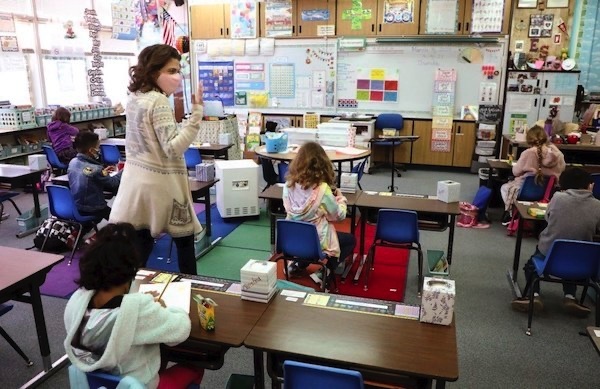News Staff![]() March 21, 2021
March 21, 2021
14K views 0 Comments 0 Likes

California just made it significantly easier for K-12 schools to bring students back to campus full-time — but some of the state’s largest districts and most powerful unions are pushing back, suggesting that hundreds of thousands of students may not receive daily in-person instruction this school year.
Student desks should now be kept a minimum of 3 feet apart, down from the previously recommended 6 feet, according to guidelines the California Department of Public Health released Saturday. The revision came a day after the U.S. Centers for Disease Control and Prevention reduced its spacing recommendations from 6 to 3 feet and less than a week after a superior court judge blocked California from enforcing its spacing rules because of their impact on students’ educational equality. The state on Saturday also made it easier for middle and high schools to reopen in the most restrictive purple tier.
The new spacing guidelines quadruple the number of students who can sit in a classroom simultaneously, paving the way for schools to transition from hybrid learning to full-time in-person instruction. But the final decision still rests with local districts and teachers unions — and many, including Los Angeles Unified, have struck reopening deals contingent on desks being 6 feet apart.
Los Angeles Unified Superintendent Austin Beutner: “The recent CDC guidance will not change our current reopening plans. Our challenge is convincing families that schools are safe, not finding ways to stuff more kids into classrooms.”
The California Teachers Association also appeared to oppose the new guidelines, framed as “another confusing message” that could result in “cramming young adults into classrooms.”
The backlash could increase pressure on Gov. Gavin Newsom to issue an executive order compelling schools to reopen full-time. Although Newsom said last week on CNN that he’s “been living through Zoom school,” Politico reported Friday that his four children have been attending in-person classes since October.
Meanwhile, many special-needs students appear to have regressed socially, physically and academically after spending more than a year without critical in-person services, CalMatters’ Ricardo Cano and Elizabeth Aguilera report.
Lisa Mosko of Speak Up, a Los Angeles-based parent advocacy group: “No one is publicly sticking their neck out for these kids.”

At Desert Local News, connections are everything. We're not just another social networking platform—we're a lively hub where people from all walks of life come together to share stories, spark ideas, and grow together. Here, creativity flourishes, communities grow stronger, and conversations spark global awareness.
Comments